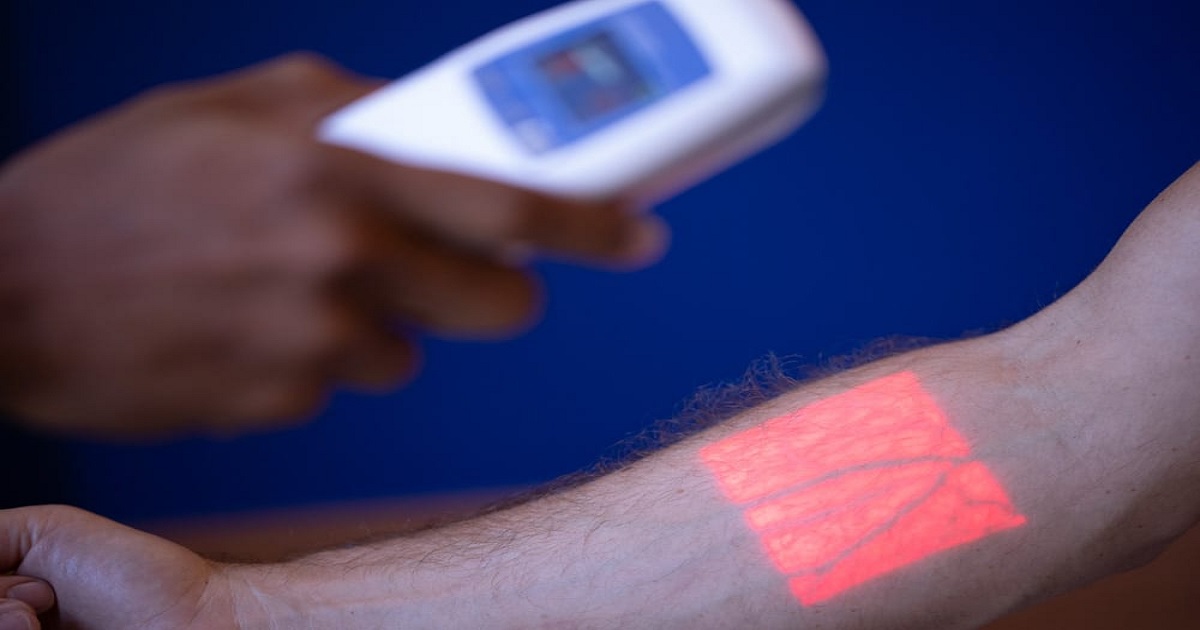
Healthtech Security
Article | August 31, 2023
Explore latest hospital industry trends driving digital transformation, data analytics, and patient-centric care for improved outcomes and personalized experiences in a dynamic healthcare landscape.
Contents
1. Understanding Dynamic Hospital Industry Trends
2. Significance of Keeping Up with Hospital Industry Trends
3. Quick Glance at Latest Hospital Industry Trends
3.1 Cybersecurit
3.2 Virtualization and ML capabilities
3.3 Telehealth and Telemedicine
3.4 Robotics
3.5 Wearables
4. Future Scope
1. Understanding Dynamic Hospital Industry Trends
The hospital industry is undergoing dynamic changes driven by digital transformation, data analytics, and patient-centric care. Hospitals are adopting technologies like electronic health records (EHRs) and telemedicine while leveraging data analytics and artificial intelligence for better insights. Patient engagement and personalized healthcare experiences are prioritized. The shift towards value-based care and proactive population health management is evident. Collaboration, interoperability, and preventive care initiatives are also gaining importance. These emerging trends in healthcare technology reflect the industry’s commitment to improving patient outcomes in an evolving landscape.
2. Significance of Keeping Up with Hospital Industry Trends
Staying up-to-date with the latest trends in healthcare industry is of utmost importance for professionals and organizations. It enables them to deliver improved patient care by implementing cutting-edge technologies and treatment methodologies. Hospitals can streamline processes, reduce costs, and allocate resources effectively by adopting industry trends focused on operational efficiency. Keeping pace with industry trends also provides a competitive advantage, helping hospitals attract and retain patients, maintain their reputation as innovative institutions, and outperform competitors. Furthermore, staying informed about evolving regulations and compliance standards ensures hospitals remain compliant, avoiding penalties and legal issues. Industry trends also reflect the changing demographics of patient populations, allowing hospitals to adapt their services and offerings accordingly. This knowledge aids in strategic decision-making, enabling administrators to align their strategies with the evolving healthcare landscape. Additionally, staying updated on industry trends facilitates collaboration and partnerships, promoting innovation and improved healthcare delivery.
3. Glance at Latest Hospital Industry Trends
The hospital industry is experiencing a wave of the latest trends reshaping the healthcare delivery landscape. From technological advancements to shifting patient needs and evolving care models, these trends drive significant changes in how hospitals operate and provide care.
3.1 Cybersecurity
Taking the lead in hospital industry trends is cybersecurity, which plays a vital role in safeguarding the industry against cyber threats and protecting patient information, sensitive data, and critical infrastructure. By implementing a robust hospital cybersecurity policy, patient data confidentiality, integrity, and availability can be ensured, along with mitigating the financial and reputational damages that can arise from cyberattacks. Furthermore, cybersecurity measures enable the continuity of healthcare services and foster patient trust. Prioritizing cybersecurity helps hospitals maintain compliance with data protection laws like HIPAA and strengthen relationships with patients and other stakeholders.
3.2 Virtualization and ML Capabilities
Next in line with hospital industry trends is the adoption of virtualization and machine learning (ML) capabilities that are revolutionizing healthcare operations and patient care. Virtualization allows hospitals to optimize infrastructure, reduce costs, and enhance resource utilization by creating virtual instances of hardware and software. Concurrently, ML algorithms analyze vast amounts of healthcare data, such as electronic health records and medical images, enabling accurate diagnoses, personalized treatments, and predictive insights. The integration of virtualization and ML facilitates remote healthcare services, ensures data security and privacy, and drives operational efficiency, ultimately leading to improved patient outcomes and streamlined healthcare delivery.
3.3 Telehealth and Telemedicine
The rapid adoption of telehealth and telemedicine, which will transform healthcare delivery, is on the horizon for the hospital industry. These technologies enable convenient access to healthcare services, especially for individuals in remote areas, reducing travel time and costs. Telehealth and telemedicine improve healthcare efficiency by reducing wait times, allowing timely medical advice, prescription refills, and follow-up care. They also facilitate collaboration among healthcare providers and specialists, ensuring access to specialized care. In emergencies, telehealth and telemedicine in the hospital industry enable real-time triage and remote monitoring. Despite challenges related to regulatory compliance and data security, telehealth and telemedicine have transformed healthcare delivery, offering convenience, efficiency, and expanded access to care.
3.4 Robotics
The integration of hospital robotics is reshaping the industry, revolutionizing surgical procedures by enabling exceptional precision and significantly reducing recovery times. Surgical robots assist in complex surgeries, improving accuracy and patient outcomes. Additionally, robots streamline tasks like medication dispensing and inventory management, reducing errors and freeing up healthcare professionals. Rehabilitation robots aid patients in regaining mobility, while robotic telepresence enables remote consultations and monitoring. Despite challenges such as implementation costs and regulatory considerations, robotics continues to transform healthcare delivery, enhancing patient care and operational efficiency.
3.5 Wearables
The widespread adoption of wearables, emerging prominently in the hospital industry, redefines patient care and monitoring practices. Wearable devices, such as smartwatches, fitness trackers, and remote patient monitoring devices, offer real-time health data and enable continuous monitoring of vital signs, activity levels, and sleep patterns. These devices provide valuable insights into a patient's health and allow for early detection of potential health issues. Wearables promote patient engagement and empowerment by encouraging individuals to manage their health actively. Healthcare professionals can remotely monitor patients' health status, track medication adherence, and intervene promptly if abnormalities are detected. Additionally, wearables offer opportunities for remote patient monitoring, telemedicine consultations, and personalized health interventions.
4. Future Scope
The potential of hospital industry trends in the coming years also encompasses genomics and personalized medicine advancements. With an increasing understanding of genetic factors in health and disease, hospitals can offer tailored treatments based on an individual's unique genetic makeup, leading to a revolution in disease prevention, diagnosis, and treatment. Furthermore, integrating blockchain technology in healthcare is expected to enhance data security, interoperability, and patient privacy, enabling seamless sharing of medical records across healthcare providers. Overall, the horizon of the hospital industry holds immense promise for innovative technologies, data-driven insights, and patient-centric care models, all contributing to the development of a more efficient, accessible, and personalized healthcare ecosystem.
Read More

Health Technology, Digital Healthcare
Article | September 8, 2023
The medical field has undergone a significant amount of change during the past few years, and it’s clear that healthcare consumers are seeking digital experiences. Meeting this need by providing virtual care options can not only remove barriers to quality healthcare but also reduce stress on the healthcare system.
At the same time, how can medical providers offer digital care options, and how can doing so drive revenue growth?
Allow online scheduling to increase appointment volume
If you have ever spent hours on hold, you know how frustrating it can be. In the same way, if patients are left on hold for too long, they will most likely disconnect before a member of the team can assist them. This is why it’s crucial to allow patients to schedule their care online. Patients expect to attend medical appointments at a time that is convenient for them, which means they want to schedule those appointments at a time that is convenient for them as well. They do not want to spend time waiting on hold, only for someone on the other end of the phone to offer them appointments that do not work for them.
The solution would be for medical providers to invest in a digital phone solution that can maintain a virtual waiting room. These virtual waiting rooms allow patients to maintain their place in line, such as receiving a callback, making it easier for them to schedule appointments. Of course, an online booking option can be helpful as well. Most patients want to schedule their appointments when they are not at work, and an online booking option allows them to do so regardless of their business hours.
Don’t forget to consider the type of booking software you use as well. If you select booking software that will automatically sync with your scheduling system in the office, you can take a significant amount of stress off your front office staff.
Digital communication options are crucial
Tebra’s recent Patient Perspectives report indicates that the majority of patients (55%) want to be able to reach their medical providers quickly to get answers to their questions, even when they do not have an appointment scheduled. If you have two-way messaging software, you can streamline the flow between your patients and providers, which may reduce the number of appointments your patients need to book.
For example, patients can ask for prescription refills, run specific numbers by their medical providers, and get quick answers to questions about symptoms they might be experiencing. Not only does this support patients and nurture their loyalty, but it also alleviates unnecessary appointments from inundating providers’ schedules.
Take advantage of telehealth for additional revenue
Before the start of the COVID-19 pandemic, very few patients took advantage of telehealth. Now, nearly a quarter (about 25%) of all patients indicate that they have used telehealth during the past year, and many patients prefer this option.
The reality is that telehealth can remove barriers that would otherwise make it hard for patients to access care. They don't have to worry about taking time off work, arranging for child care, or driving a long distance to meet with a doctor.
While telehealth will never fully replace in-person visits, it can be an excellent option for cold and flu symptoms, mental health issues, and routine check-ins. By offering telehealth to your patients, you can make it much easier for them to access the care they need.
Modernize your revenue channels by taking advantage of digital healthcare
It’s obvious that the medical world is changing quickly, and digital aspects of care are here to stay. To ensure your practice can adequately meet your patients’ needs, take full advantage of everything in this article and ensure you have reliable digital care options. You can develop multiple revenue streams for your medical practice or system while maintaining high patient satisfaction rates and without adding to your workload.
Read More

Health Technology, Digital Healthcare
Article | August 21, 2023
Your sales cycle encompasses every action you take to close a new customer as a salesperson. But there is a possibility for the sales cycle to be confused with sales methodology. Sales methodology is a framework in which one practices a sales cycle. Whereas the sales cycle is the step-by-step process of you, as a salesperson, to close a deal with a client.
Piper Drive, a sales CRM and pipeline management platform defines a sales cycle as the series of predictable phases required to sell a product or a service, and that sales cycles can vary greatly among organizations, products, and services, and no one sale will be the same.
Especially with the healthcare industry, a thorough understanding of your health tech sales cycle will make your sales operations more efficient. Shortening the sales cycle without an up-front investment for sales is one of the critical healthcare sales and marketing goals. If you shorten your health tech sales cycle, you get more time to make additional leads. This will ultimately result in having an improved bottom line.
A faster and shorter sales cycle can bring you more advantages in the competitive sales world of your industry. It will indeed allow your company to grow its business by improving market share. Have you ever thought, as a salesperson, about the effective ways to shorten the health tech sales cycle? This article mainly focuses on proactive ways to shorten your sales cycle and improve profitability.
Challenges of Long B2B Health Tech Sales Cycle
According to Marketing Sherpa, a market research institute, the length of the sales cycle can vary from industry to industry. Comparatively, the health tech industry has a longer sales cycle. Still, there are many effective ways to shorten it and bring a positive impact on your sales process.
In general, B2B sales take a lot of time to maintain. Thus, the B2B health tech sales cycle takes even months to close a sale with a prospect and faces many challenges in the process. Some of the challenges you may face, as a health tech salesperson, can be the following on the process:
Turning the Lead to a Sales-Ready Prospect
No health tech salesperson will find a lead ready to make the sale without any persuasion from you. In the health tech sales cycle, lead nurturing should be your best bet to convert a prospect.
With longer sales cycles, it won't be easy to nurture a lead all through the process and make a sales-ready prospect. It would be easier to convert leads when they are ready if you keep in touch with the prospects. People often find it difficult to do so in the long health tech sales cycle and end up not converting potential clients into happy customers.
Maintaining Engagement Over Time
The sales team keeps converting leads on their radar. As days and months pass, it is challenging to memorize each prospect you have interacted with. Neglecting them brings nothing to your business.
It can be a juggle to balance new prospects with existing SQLs. Older ones may get lost in the weeds as new leads come in. No one can tell which one is a higher priority. Whom will you pay more attention to and for how long? It can be a severe obstacle in the long B2B health tech sales cycle.
Keeping Your Sales Team Energized
If your sales team is not engaged with the process itself and enjoys it, they will have a more challenging time dealing with leads. It is a fact that, unfortunately, salespeople can become frustrated or bored due to working with difficult and hesitant leads.
As the health tech sales cycle drags on, it is tough to remain emotionally calm. If you have no strategies to energize them promptly, apathy or discouragement may come into play.
Ensuring Marketing and Sales Alignment
Lack of communication between the sales and healthcare marketing teams can pose the most detrimental challenges. It can impact the health tech sales cycle seriously. This loss of alignment between marketing and sales can hurt lead nurturing and lead to further difficulties like the ones listed above.
When the two teams move out of sync, it often requires a lot of effort to get them on the same page again. These teams can work separately with decisions and different goals, but it would not benefit the entire company.
Five Stages of the Typical Sales Cycle
It is better to understand the five stages of the health tech sales cycle to comprehend how the sales cycle comes into play completely.
Prospect
This is the stage where the sales team attracts leads and listens to them, and learns to offer what they need.
Connect
This is the stage for you to get leads to move forward with your offers. You can utilize all the data you have amassed during prospecting.
Research
As a salesperson, this is when you learn about leads and determine whether the prospect intends to buy.
Present
In this stage of the health tech sales cycle, you offer your product or services as an effective solution for your lead's pain points.
Close
It’s a fit! By now, you know if your lead wants your product or service and move forward.
Benefits of Shortening your Sales Cycle
A shorter health tech sales cycle allows you to meet more prospects within the same time frame. For example, if you take one week for each prospect to complete the cycle, you can meet more people than with a two-week average life cycle for a single prospect. As you meet more people, it allows you to make more money. Moreover, most of the prospects prefer to have shorter sales cycles provided that you fulfill their need and solve their problem.
However, even with a short health tech sales cycle, you should have an effective method to track sales information. Along with a short sales cycle, an effective method will increase your team’s efficiency and sales numbers. You will make more profits and improve your sales cycle.
Ways to Shorten your Long Health Tech Sales Cycle
One of the significant challenges faced by healthcare technology salespeople is shortening their health tech sales cycle. Unlike B2C, the B2B process of sales has to deal with many decision-makers and educate them about the value of your products. Typically, it takes a lot of time and effort to convince your prospects that your solution is customized to meet their unique needs.
However, your health tech sales cycle can become agonizingly long as each prospect can have a different perspective about your solution. It can also occur due to the number of people involved in the decision-making in B2B companies. According to the latest Demand Gen Report, the buyer’s journey is getting more complicated and longer. This makes the sales process worse, which is already tedious.
However, the good news is that you can follow these marketing strategies to shorten your health tech sales cycle tactically.
Understand Your Buyer Personas
Keep yourself away from trying to engage the wrong people. This will not bring you any results in the end. Before commencing the sales process, you should have a clear idea of who your targeted audience is. The decision-makers or influencers in the organizations you are targeting are your buyer personas.
After identifying your personas, by answering the following questions, you can outline their qualities:
• What are their goals?
• What are their responsibilities?
• What trigger drives them to buy?
• What problems are they dealing with?
• How do they like to research?
• What inhibits a purchase?
As you answer these questions, you will get a clear idea of the best way to approach them.
Send an Introductory Video
The prospects get to know the salesperson only in the in-person meeting. So before the in-person meeting, you can consider sending them an introduction video. This would add value and explain why you are interested in them with a ‘call-to-action. It creates familiarity by the time you connect with them. This is a very creative step to shorten your health tech sales cycle.
Provide Pre-Sales Appointment Content
Having a sales appointment with a prospect, who does not know anything about your solution, is one of the biggest mistakes you can make in your health tech sales cycle. This means you may have to have several meetings to convince the client. This problem can be eliminated with a lead nurturing email with informative content. This email can have a link to an informative blog about your product, which was written previously. It will make them peruse your website before the actual sales meeting with you. It saves your time by eliminating many meetings to educate the prospect about your product.
Provide Post-Sales Appointment Content
The prospect is expected to come out with some concerns and objections after the first sales appointment. As a healthcare tech company salesperson, it is your responsibility to eliminate all those obstacles by addressing them strategically. Sending follow-up emails, videos, and case studies helps address those concerns. The content can be used to guide other prospects too. Overcoming these obstacles with effective content can shorten your health tech sales cycle effectively.
Come Clean with Pricing
Pricing of your products can be one of the main concerns for your prospects. Many salespeople address it only at the last stage of the health tech sales cycle. Not revealing the price at the beginning will only lengthen your process. Moreover, it may result in losing trust in you. Be transparent and reveal the price, to save yourself from such issues.
Leverage Social Proof
One of the smartest ways to win the trust of your prospect is to provide social proof. It will also make the deal close sooner. The best social proofs are case studies with the impact of your products or ROI. Remember to make that the company featured in the case study is similar to the particular prospect's company.
In the health tech sales cycle, it is crucial to thoroughly understand the prospect. Your sales cycle should connect with the process of lead nurturing, where you act as an advisor. This will also help you build trust with the prospects and increase your chances of closing the deal before the expected time.
Executing all of these alone would be challenging. At Media7, we help companies market their healthcare technology product with innovative strategies and support by implementing these strategies effectively. Our strategies help attract prospects, convert them and turn them into your happy customers forever. To know more about us, visit https://media7.com/
Frequently Asked Questions
What are the stages in the health tech sales cycle?
B2B health tech sales cycles include seven main stages. They are sales prospecting, making contact, qualifying the lead, nurturing the lead, making an offer, handling objections, and closing the sale. Following these steps help a salesperson to close the sale effectively.
How does the health tech sales cycle help?
The health tech sales cycle helps you identify potential clients and nurture them through the process of sales. It makes you effectively and efficiently guide your clients and gives them the confidence to go forward with more effort.
What are the best practices for the health tech sales cycle?
The best practices for the health tech sales cycle can be attracting more prospects through content marketing, building trust by understanding clients better, focusing on your customers' clients, and knowing the prospect’s organizational chart.
Why is the sales cycle important in health tech?
The sales cycle in the health tech industry helps the sales managers to forecast the accurate picture of your sales. This because they know where your salespersons are in the sales cycle. It also gives a clear picture of how many deals your salespeople close out of a given number of leads.
Read More

Article | April 20, 2020
Healthcare is top of mind as the coronavirus hits hard everywhere. The inefficiencies of the system itself are on full display during the pandemic — where testing is hard to come by, diagnoses and treatments are reactive rather than proactive, and many people do not get the care they need, when they need it. Adrian Aoun, CEO and founder of Forward, a tech-driven healthcare startup, told Karen Webster that it’s possible to build a completely new healthcare ecosystem, beginning with primary care — and the overhaul needs to leverage data and artificial intelligence (AI).
Read More